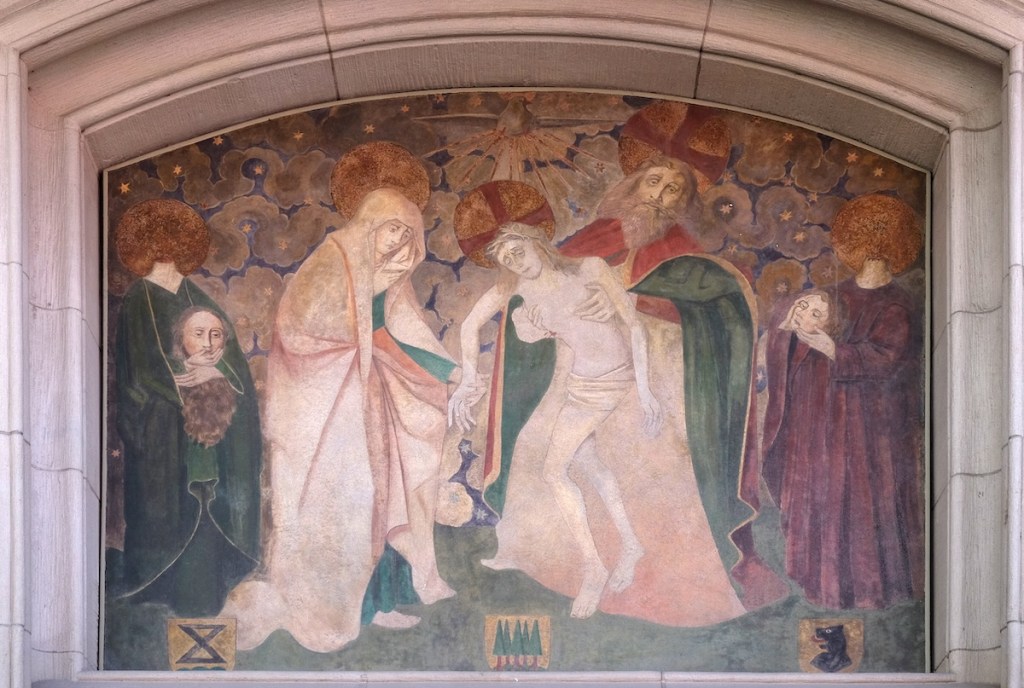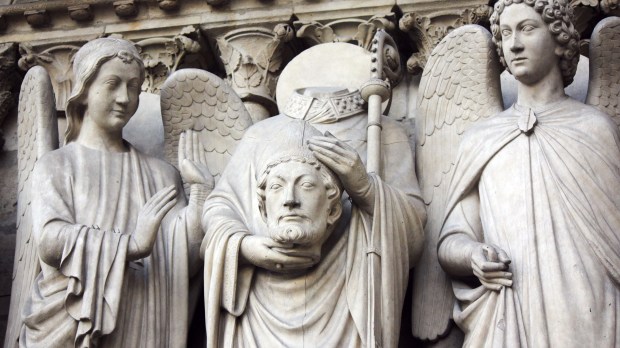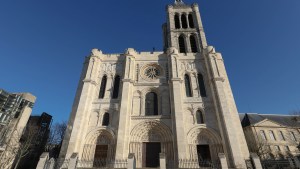Lenten Campaign 2025
This content is free of charge, as are all our articles.
Support us with a donation that is tax-deductible and enable us to continue to reach millions of readers.
It almost sounds pagan, even blasphemous.
But there’s no need to worry: Prayer to cephalophores is well within the bounds of legitimate Catholic spirituality. This is because a “cephalophore” is actually a saint who carried their own severed head after having been decapitated.
The term “cephalophore” is a Greek word that translates to “head-carrier.” And the Church’s cephalophoric tradition goes back almost to the very beginnings of the Church itself.
Since the early centuries of the Church, the decapitated martyr came to have heavy significance as the ultimate (post-Crucifixion) symbol of having suffered for the faith.
According to the book The Warrior Saints in Byzantine Art and Tradition, the Early Church Father St. John Chrysostom claimed that a martyr’s severed head was “more terrifying to the devil than when it was able to speak.” He also “compared soldiers showing their wounds received in battle to martyrs holding their severed head in their hands and presenting it to Christ.”
The book Heads Will Roll: Decapitation in the Medieval and Early Modern Imagination relates that the cephalophore is the “most frequently recounted miracle in hagiographic literature” and notes that there is an especially strong cephalophoric presence in medieval French art, very possibly owing to the legend of St. Denis.
St. Denis was reportedly a 3rd-century bishop of Paris (then known as Lutetia). A steadfast and effective proselytizer of Christianity, he incurred the wrath of local pagan priests. They responded with lethal hostility. The legend, as related in Butler’s Lives of the Saints, says that Denis, after his execution, picked up his severed head and proceeded to walk for several miles, with the head preaching along the way. The site where he eventually collapsed and died became a shrine and later the Basilica of Saint-Denis.
A patron saint of both Paris and France, the patronage of Denis also extends to headache sufferers. He is the most prominent of all cephalophores.
John the Baptist doesn’t count
Some of you may say: What about John the Baptist?
Well, it is true that this 1st-century preacher and baptizer of Jesus is more famous than St. Denis. And he was, indeed, decapitated. However, John the Baptist is not actually categorized as a cephalophore because he never carried his severed head in his hands.
Despite this notable exclusion, the Church tradition would eventually hold dozens (if not more) of cephalophoric saints.
Headless martyrs were a frequent motif of visual artists. Some of the more striking artistic depictions of cephalophores include those of St. Mitre (a 5th-century Greek martyr decapitated in France), St. Justus of Beauvais (a 3rd-century Gallo-Roman martyr, later depicted by the legendary Flemish painter Peter Paul Rubens), and St. Domninus of Fidenza (an Italian convert martyred in the early 4th century).
Perhaps the most dramatic artistic depiction is the one showing Sts. Felix and Regula, 3rd-century converts who were martyred in what is now Switzerland. They (along with their decapitated servant Exuperantius) are depicted carrying their own heads and marching in a line toward Jesus, as if preparing to present Him with gifts.

Though the Church’s cephalaphoric tradition has been a feast for artists, the concept of a cephalaphore does propose something of an aesthetic conundrum: Specifically, where do you put the halo? Do you place it around the severed head? Or do you place it hovering around the blank space where the head once was?
Perhaps there is no right answer, or wrong answer. Either way, the cephalophore has proven among the most memorable forms of Church iconography.


